YUJI AGEMATSU
When I started to collect objects around 1985, I would do it very subconsciously and without purpose. It would just be one part of an activity, and touching an object was the first reason I would have to pick something up. But then I began to notice that walking had also become very important, maybe even more than the picking up.
I used to carry a pedometer at that time, and would take note of every step I took. Each Avenue has a different length so I counted and found, for example, that crossing Second Avenue took about 23 steps. Remembering steps became a kind of ‘practice time.’ I would concentrate on the steps without thinking about picking up objects, or encountering an object, pushing them out of my mind and totally forgetting about picking them up. It was a kind of psychological experiment. But all of a sudden, an object would jump into my eye — the objects themselves are like a signal for me.
I made these drawings in 2003 when I lived in Midtown Manhattan. It is an area totally designed according to a grid structure, as we know, allowing us choose many different ways to walk around. I had been living at 308 East 53rd Street, but after fighting back against the developer that had bought the building, I was offered a settlement and a new apartment in one of his other buildings. Shortly after 9/11 I moved to 711 Second Avenue, between 38th and 39th Streets. Even though I was all the way on the east side of the island, I was able to walk west across Manhattan to Eleventh Avenue and extend my route, block by block.
In those days I was reading Samuel Beckett’s “Quad” performance (in a Japanese translation of L’Épuisé, Gilles Deleuze’s book on Beckett that I got in the 1990s). I’ve seen it performed two or three times. Four actors or actresses start to walk, and where they walk is already designed so that they never run into each other. Beckett’s idea was how to consume a square space through walking. This really inspired me to walk, and to make my own diagrams.
Because these walks were part of a monthly project, I would have already set up and made diagrams for the next month before it began. For example, I drew the October walks in September. These drawings then are like scripts, planning for the day. I memorized them each morning and would usually take my walk around 9am, before going to work. Because I was a freelance worker I had to be on time, either to the Judd Foundation, or Nam June Paik’s studio, otherwise it was going to be difficult to send the invoice. Life in the city means we have to take measurements, and I was able to calculate and note how many steps I took, how much time I spent, at what time I would start to walk, and at what time I would return to my apartment.
Because of the lawsuit against my former building owner, I had received a good deal on my 2nd Avenue apartment and was able to live rent-free for a while. I could afford to buy a film camera and put the extra money towards developing slide film, and in December 2003 I started taking photographs in Times Square and decided to stop doing these kinds of walking projects. Instead, I continued photographing all the way through 2004, before stopping and then starting again in 2007.
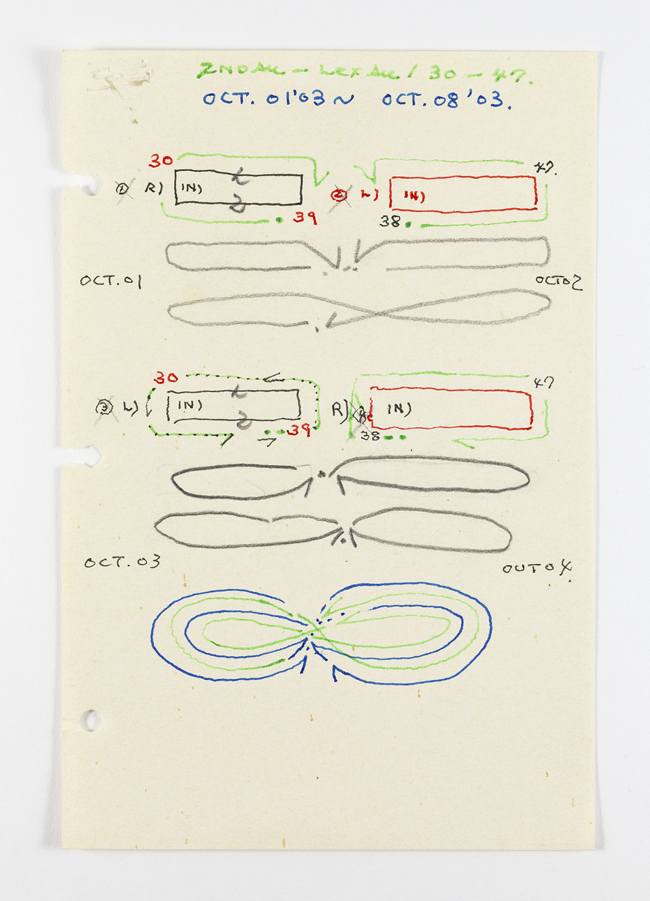
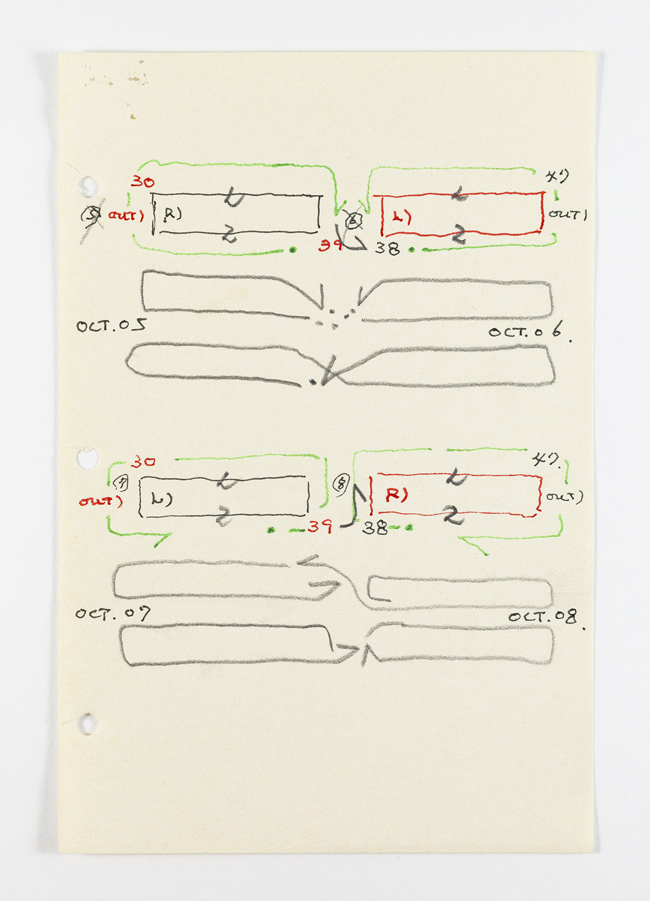
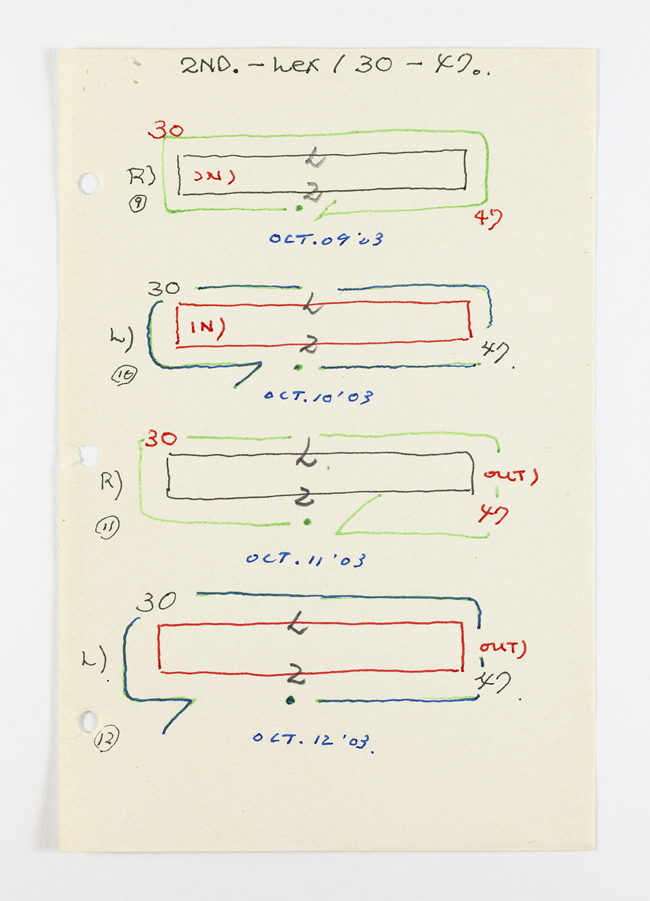
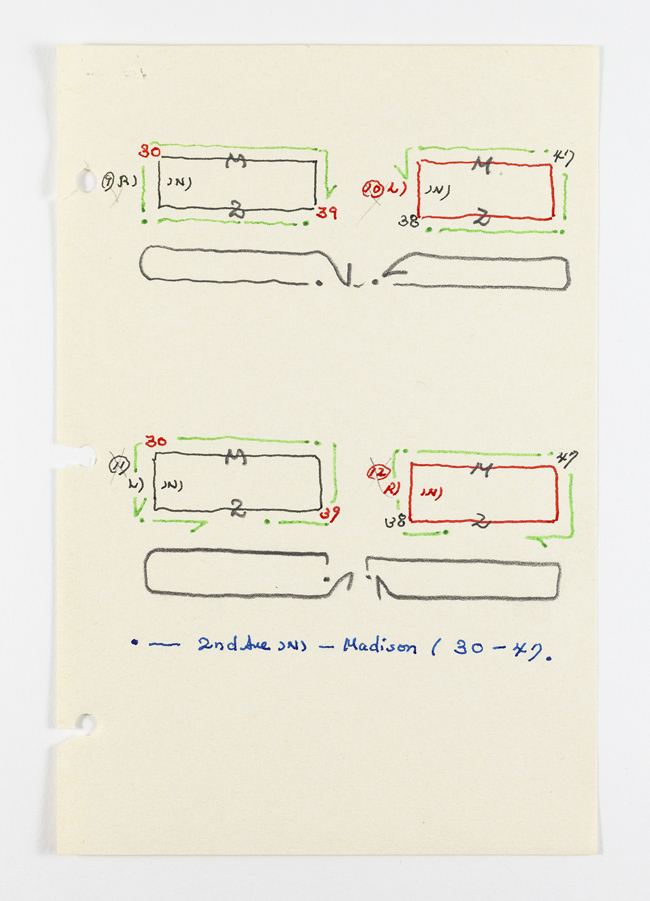

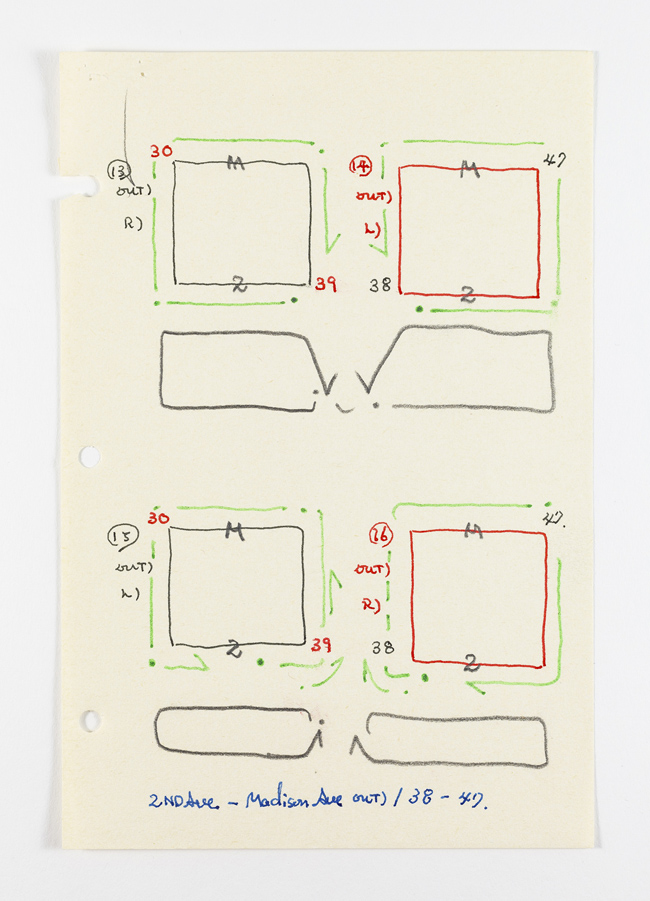
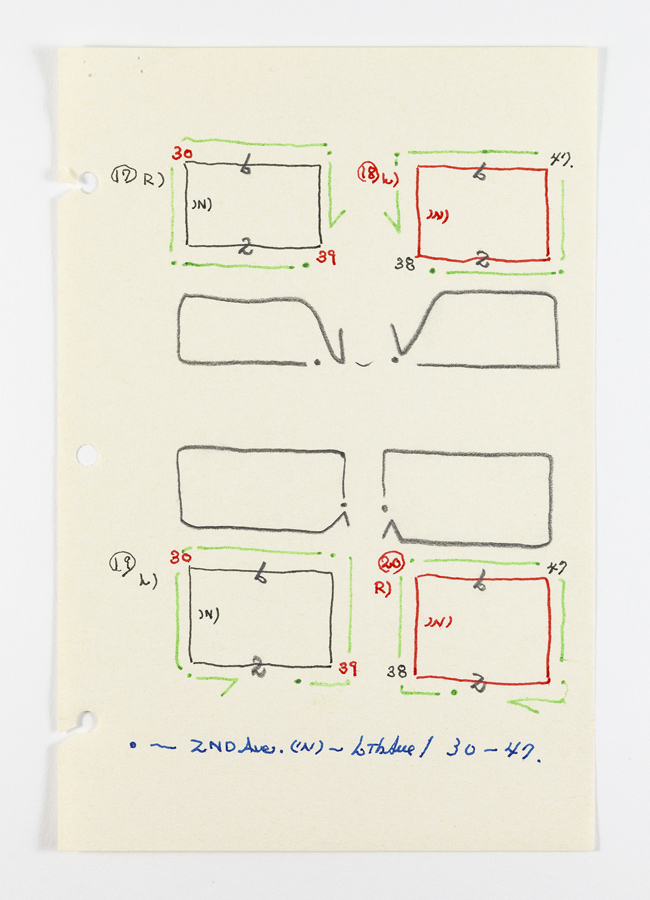
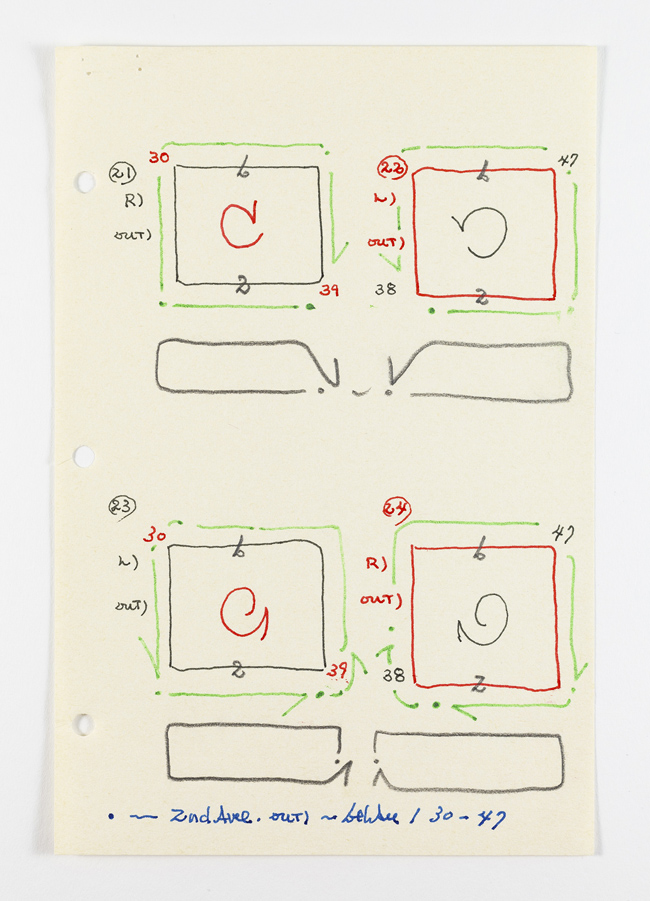
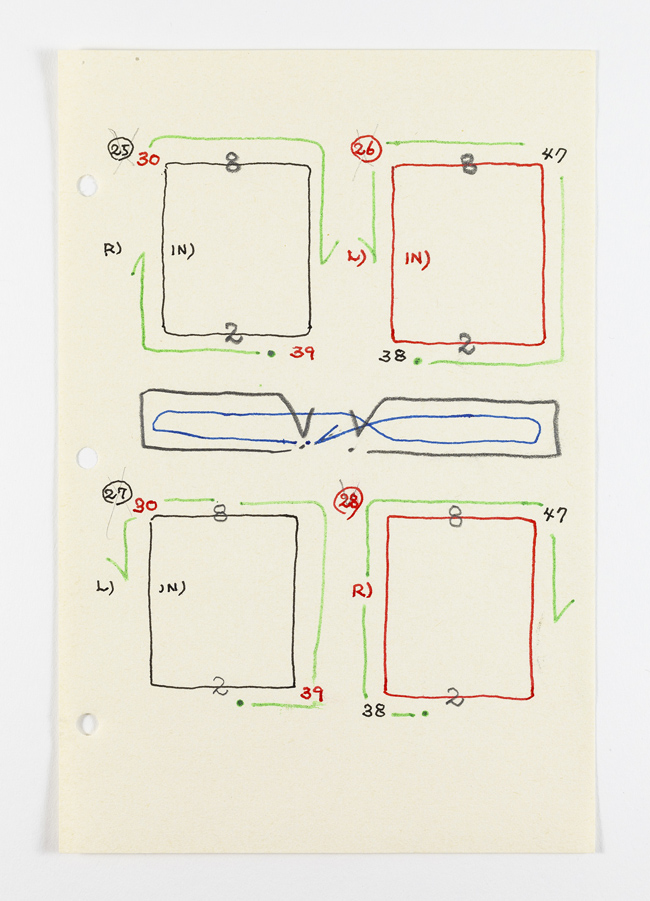

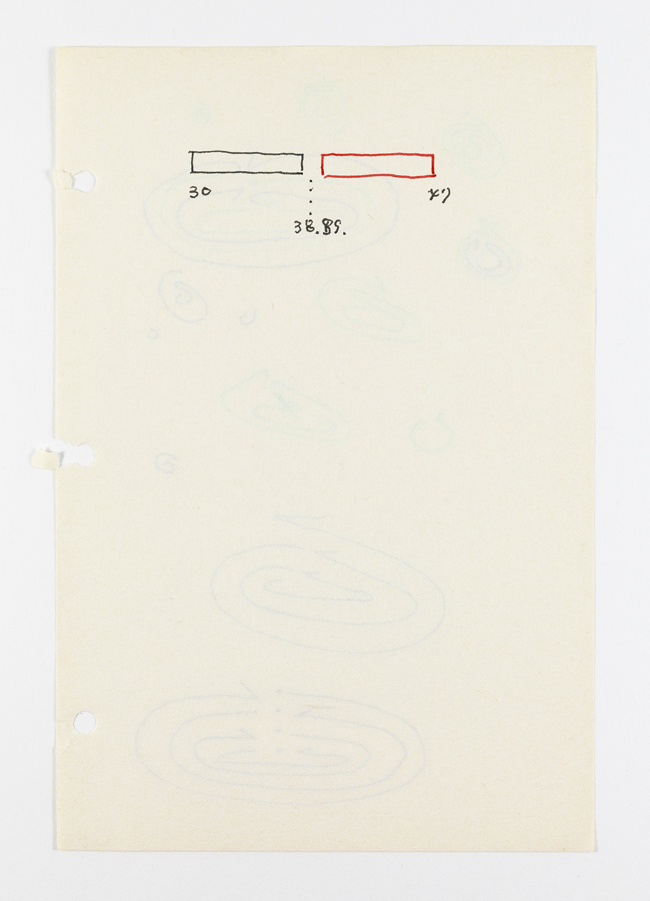
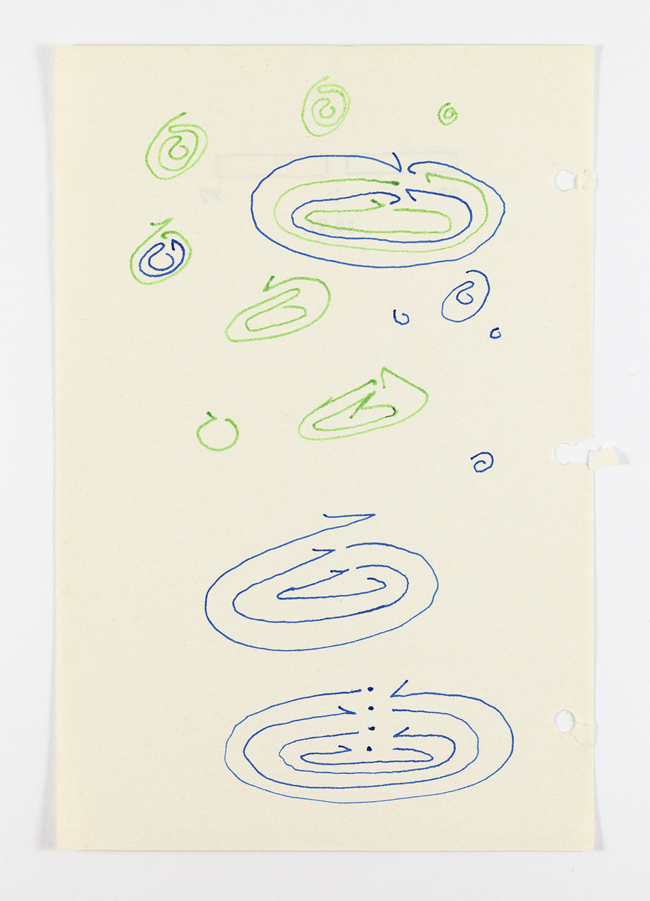
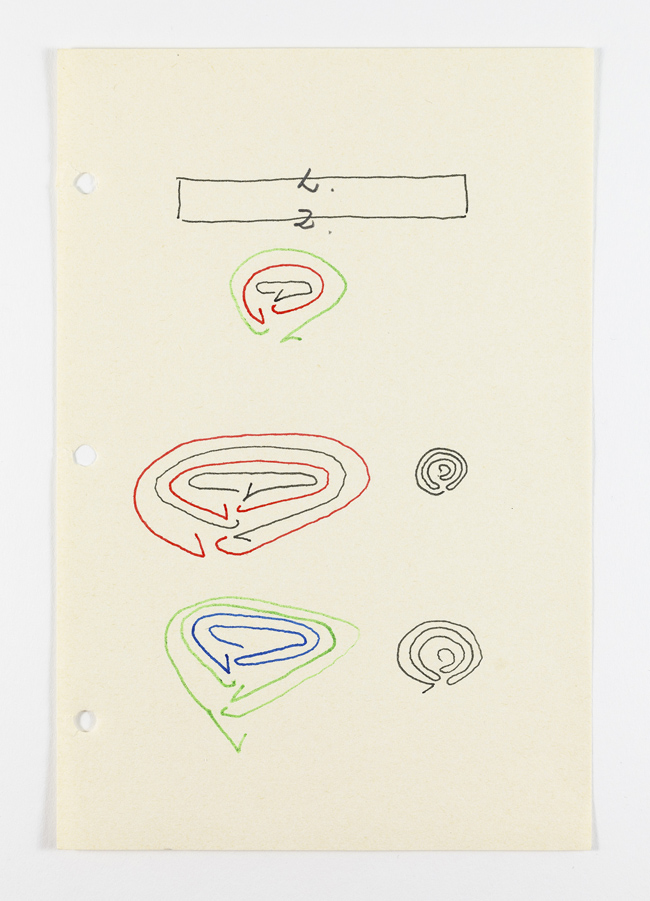
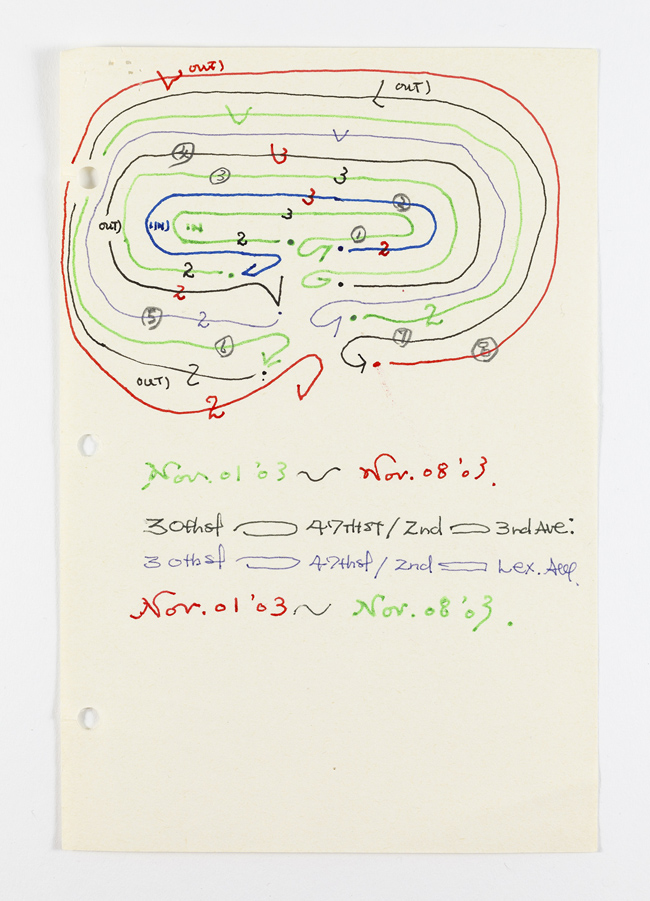
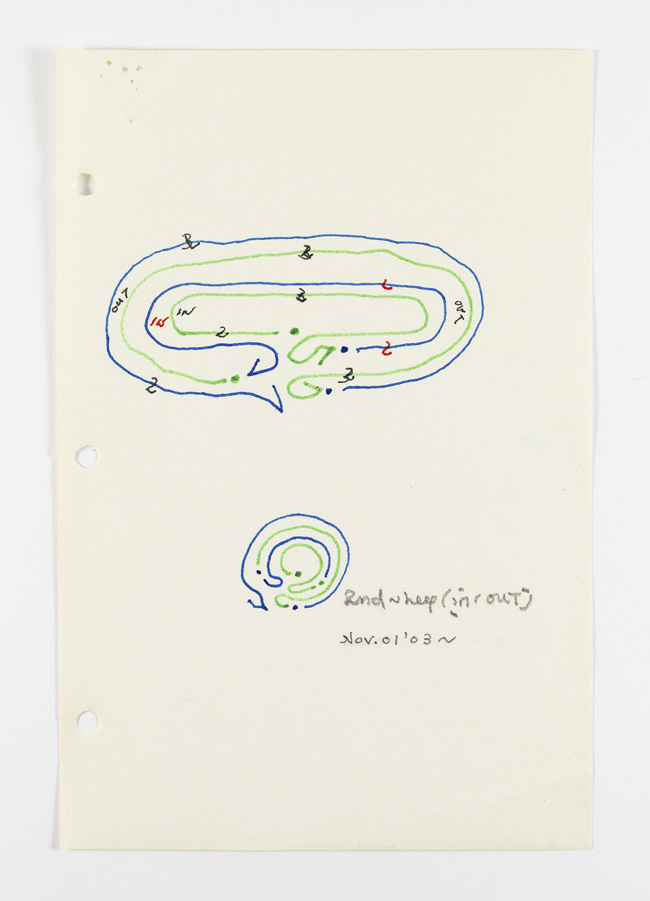
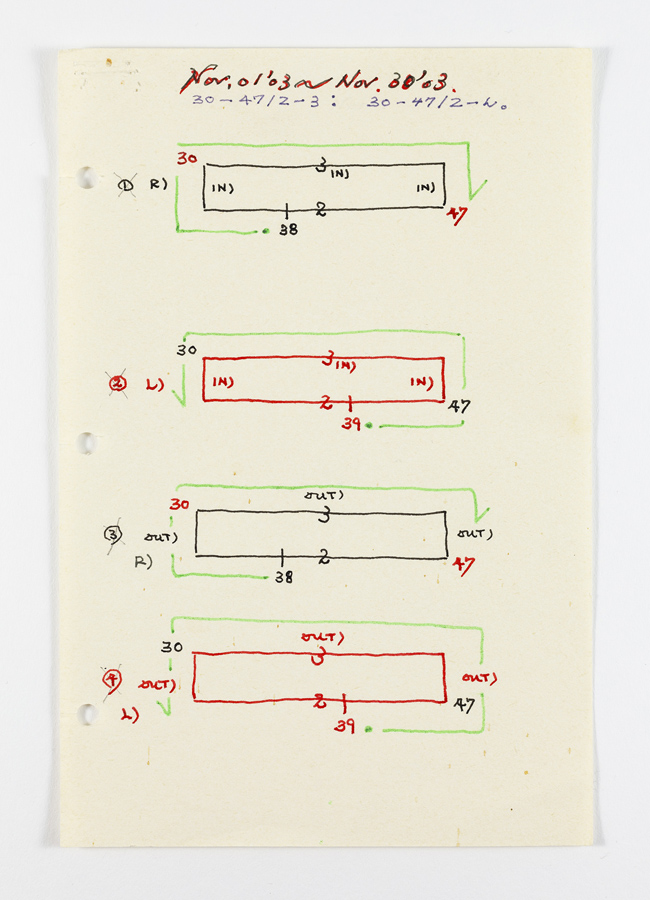
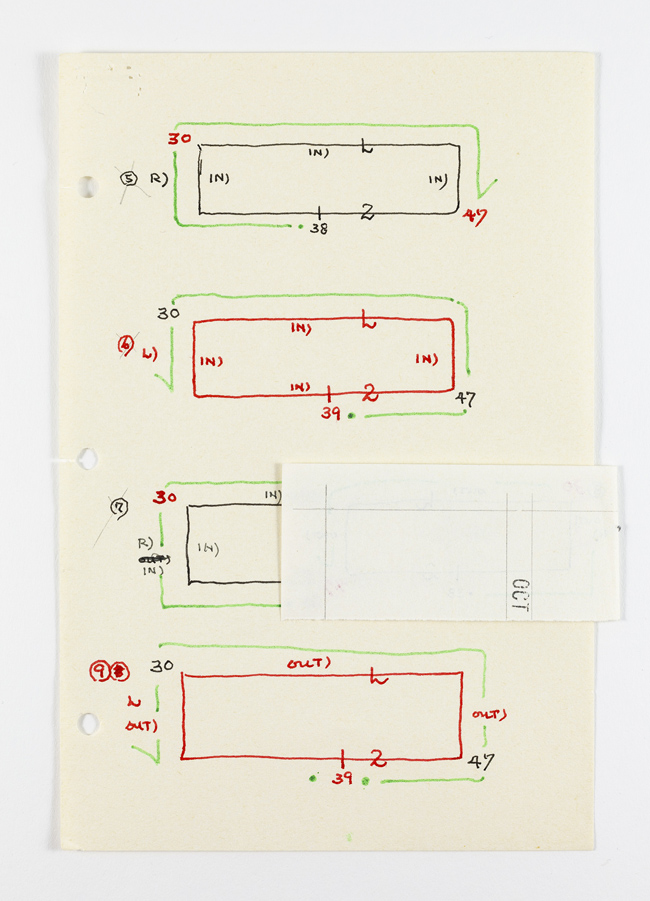
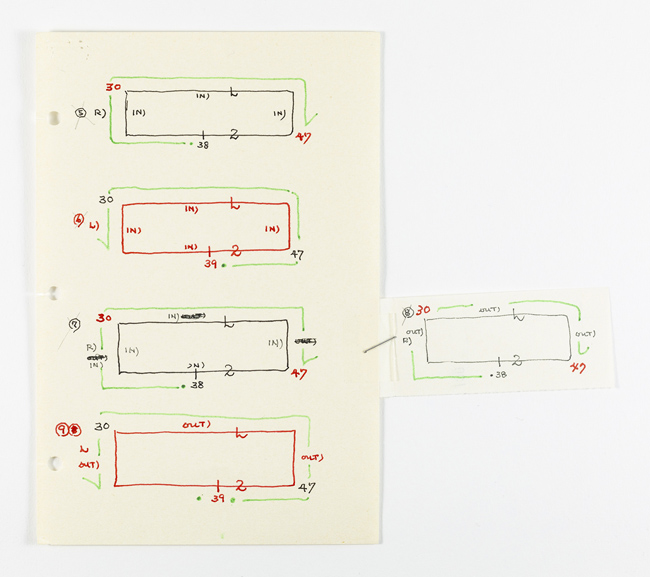
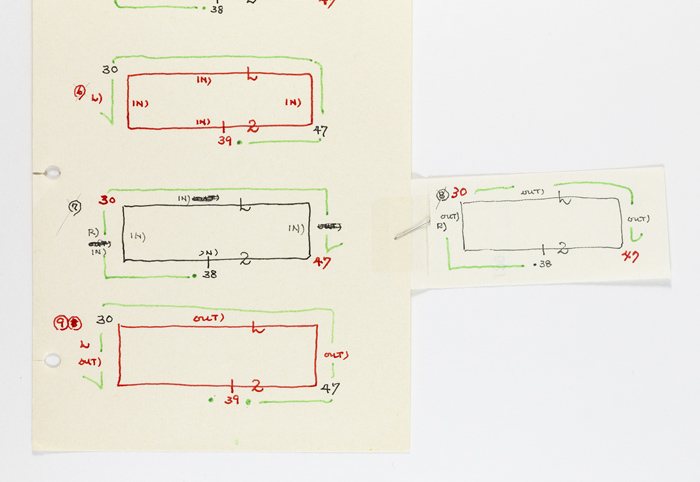
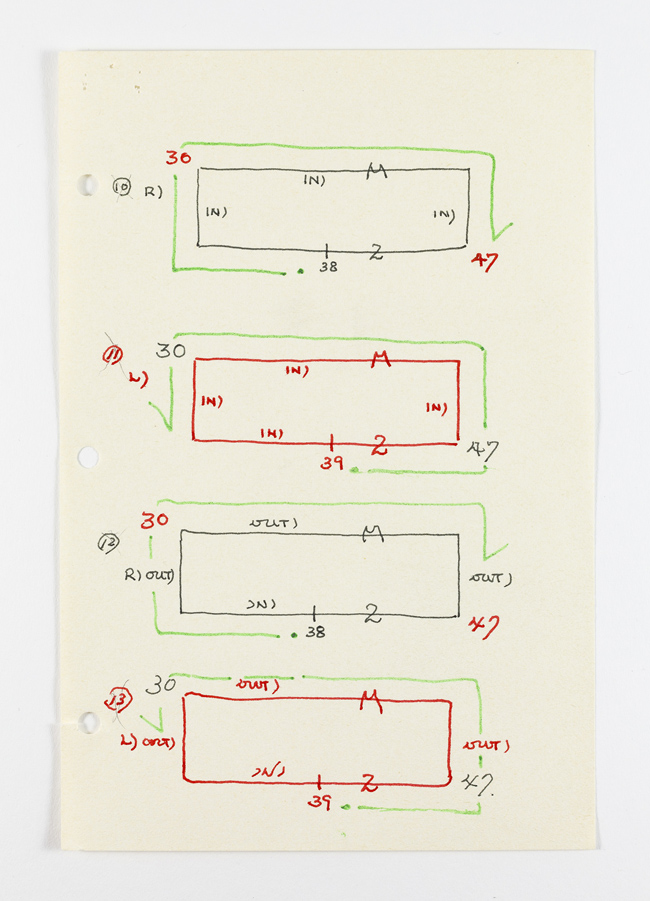
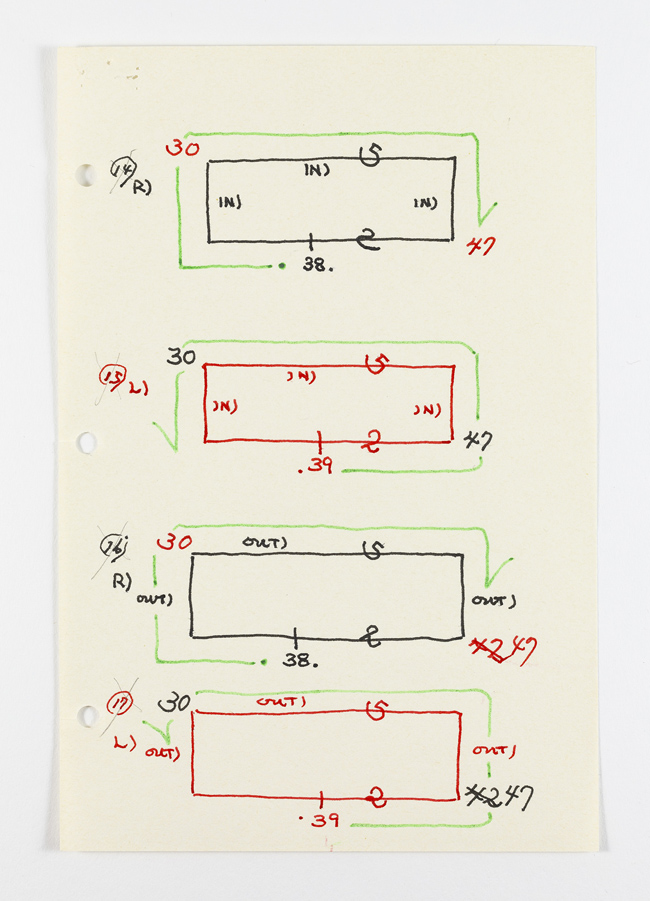
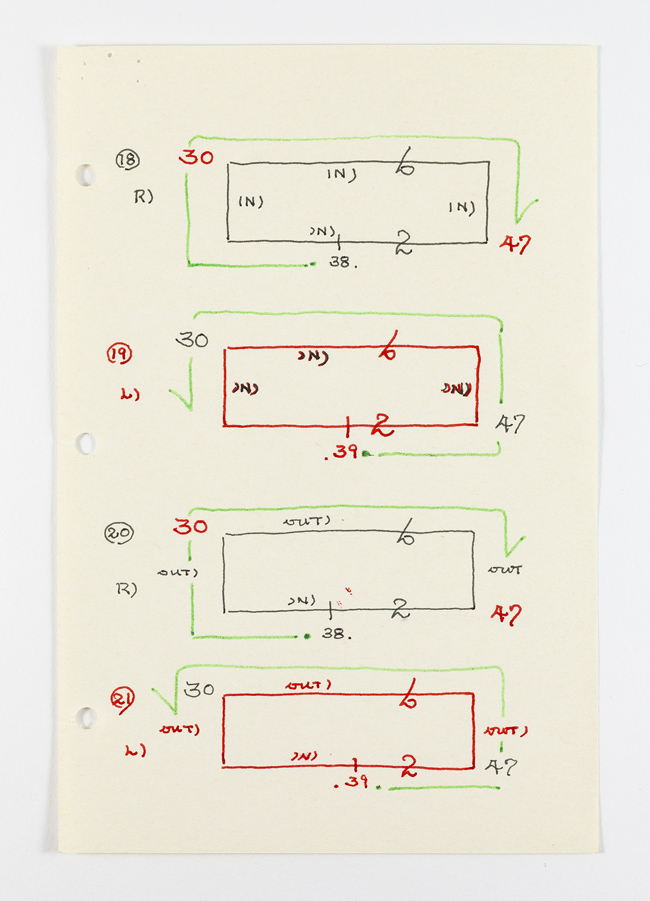
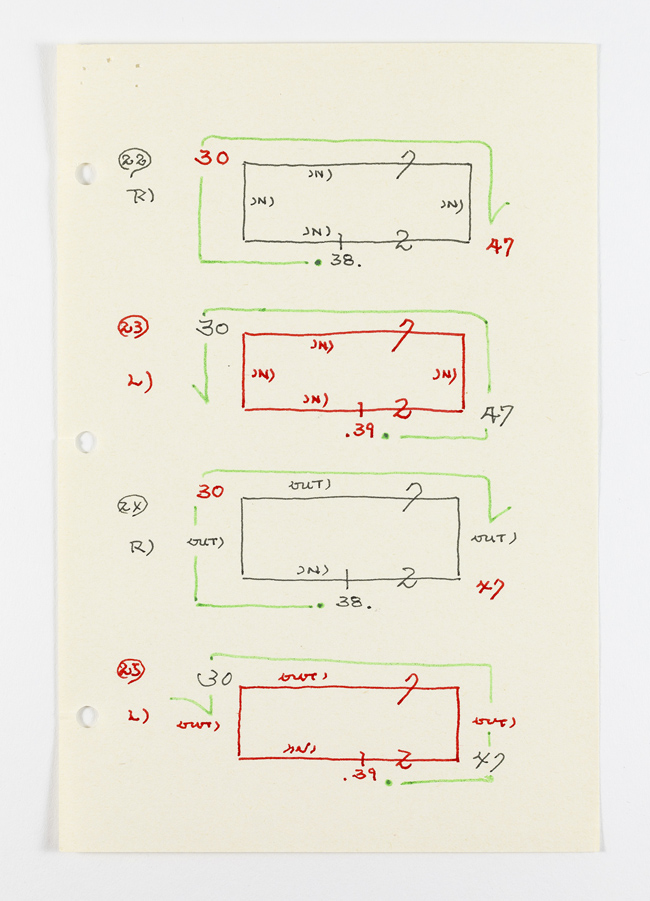
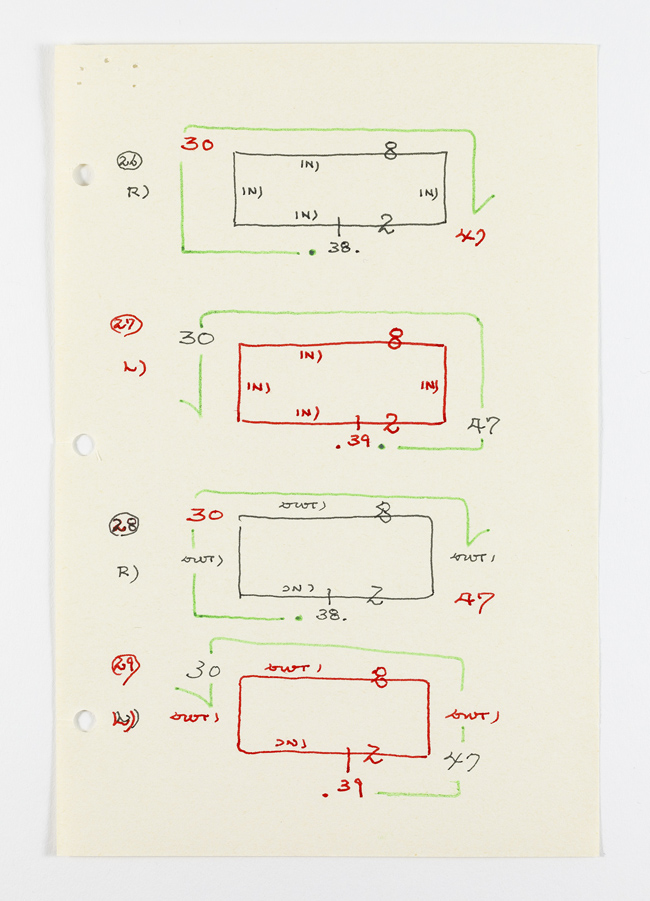
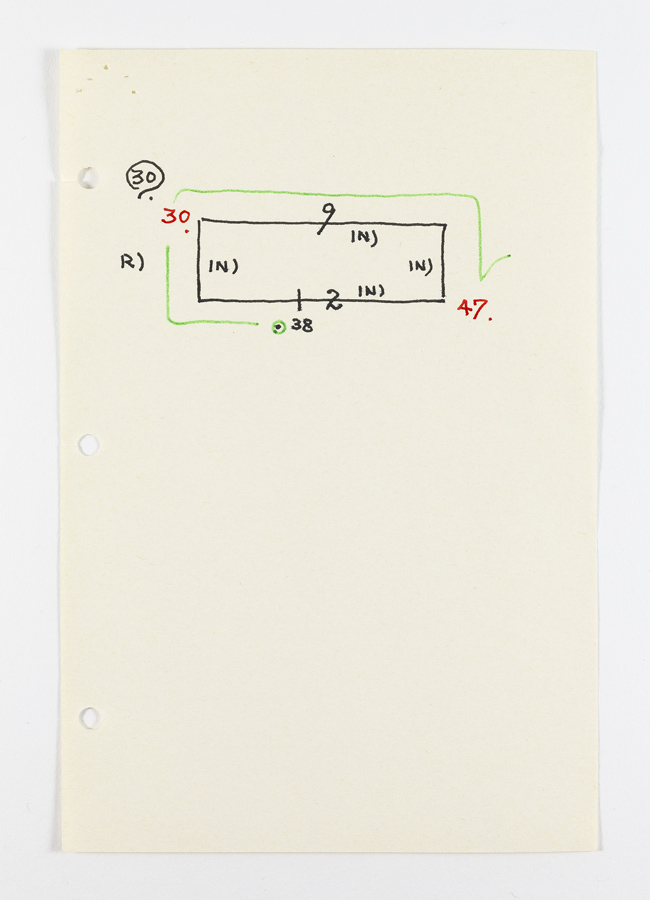
—
Yuji Agematsu was born in 1956, in Kanagawa, Japan, he lives and works in Brooklyn, NY. Agematsu studied with Tokio Hasegawa, a member of the band Taj Mahal Travellers, and the jazz drummer and choreographer Milford Graves. He has had solo exhibitions at Miguel Abreu Gallery (New York, 2017, 2019 & 2020), Contemporary Art Centre (Vilnius, 2019), Lulu (Mexico City, 2019), the Power Station (Dallas, 2018), Artspeak (Vancouver, 2014), Real Fine Arts (Brooklyn, 2012 & 2014), Anthology Film Archives (New York, 2004), and TZ’Art & Co. (New York, 1994). In 2014, Agematsu mounted a large scale exhibition at Yale Union (Portland, OR), which was accompanied by the monograph ZIP: 01–01–14…12–31–14, published by Yale Union, Thea Westreich Wagner/Ethan Wagner Publications, and Artspeak. Agematsu was prominently included in the 57th Carnegie International, Pittsburgh (2018), and was previously shown in SPEAK, LOKAL, Kunsthalle Zurich (2017), SERIALITIES, organized by Olivier Renaud-Clément, Hauser & Wirth (New York, 2017), THE KEEPER, curated by Massimiliano Gioni, New Museum (New York, 2016), and LOOKING BACK / THE 7TH WHITE COLUMNS ANNUAL, selected by Richard Birkett (2013). His performances have taken place at the Swiss Institute (New York, 2018), Artists Space (New York, 2017), and as part of the solo presentation WALK ON A, B, C, organized by Jay Sanders for the Whitney Museum of American Art (New York, 2016). His work is held in the permanent collections of the Whitney Museum of American Art, the Walker Art Center, the Albright-Knox Art Gallery, the Brooklyn Museum, The Israel Museum, The Columbus Museum of Art, the Loewe Foundation, and the Pinault Collection. In March he will have a solo exhibition at The Secession (Vienna, 2021).
